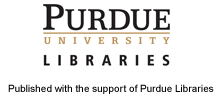Abstract
PURPOSE: This study investigated changes in salivary α-amylase (sAA), cortisol, and interleukin-1β (IL-1β) concentrations following completion of an ultra-marathon trail run (UMT) to better understand the physiological stressors imposed by this extreme type of race. METHODS: Eight subjects participated in this study. Each subject completed a 50 km UMT. Two-minute oral salivary swabs were taken 10 minutes prior to race start and again within 1 minute of race finish. Samples were analyzed for sAA, cortisol and IL-1β using ELISA kits. RESULTS: Our results demonstrated a significant increase in both sAA (p = 0.002) and cortisol (p < 0.001) from baseline. No significant differences were observed for IL-1β. There was no significant relationship between the observed sAA increase and race speed. The observed increase in cortisol was significantly correlated with race speed (R2 = 0.582, p = 0.028). CONCLUSION: Participation in UMT is associated with activation of the sympathoadrenal and hypothalamic–pituitary–adrenal axes, but not an increase in IL-1β. Better understanding of physiological stress associated with ultra-distance events could lead to improvements in training and performance for individuals engaging in long-distance aerobic events.
Recommended Citation
Stout, Kevan W.; Pearson, Jeremy R.; Hambleton, Catherine A.; Deckert, Jake A.; and Gallagher, Philip M.
(2023)
"The Effects of Ultra-Marathon Trail Running and the Physiological Response of Stress on Salivary Biomarkers,"
Journal of Human Performance in Extreme Environments: Vol. 18
:
Iss.
1,
Article 8.
DOI: 10.7771/2327-2937.1152
Available at:
https://docs.lib.purdue.edu/jhpee/vol18/iss1/8
